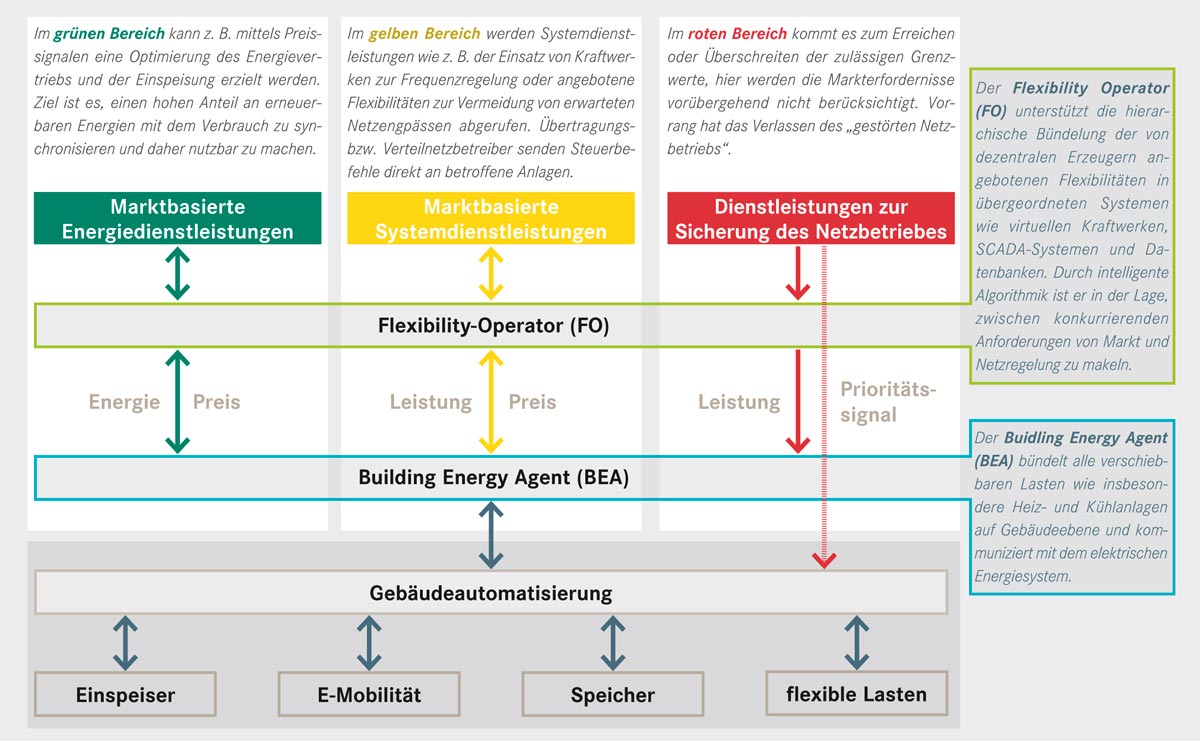The diagram shows various states of the electricity market resulting from particular network scenarios. Depending on the state of the grid various different energy or system services will be needed in order to keep the entire system functioning normally, so that the market can operate without restrictions. Ideally access to these services would be automated.
Market-based Energy Services
Within the green sector optimized power distribution and feed-in can be achieved, for instance through price signals. The goal is to synchronize a high proportion of energy from renewable sources with demand and make it usable that way.
Market-based System Services
Within the yellow sector system services are called upon, such as employing power stations to modulate the frequency or making use of available degrees of flexibility to avoid anticipated grid shortfalls. Distribution network operators send control commands directly to the appropriate facilities.
Services for Grid Operating Security
Within the red sector the borderline of permissible values is reached or breached, leading to a temporary disregard for market demands. The priority here is ending the ”disrupted network status”.
Flexibility-Operator (FO)
The Flexibility Operator (FO) supports the hierarchical bundling of the degrees of flexibility offered by local generators in higher-level systems, such as virtual power plants, SCADA systems and databases. It is able to broker between the needs of the market and grid regulation, using intelligent algorithms.
Building Energy Agent (BEA)
The Buidling Energy Agent (BEA) combines all post-ponable loads, in particular heating and cooling facilities for buildings, and communicates with the electrical power system.
